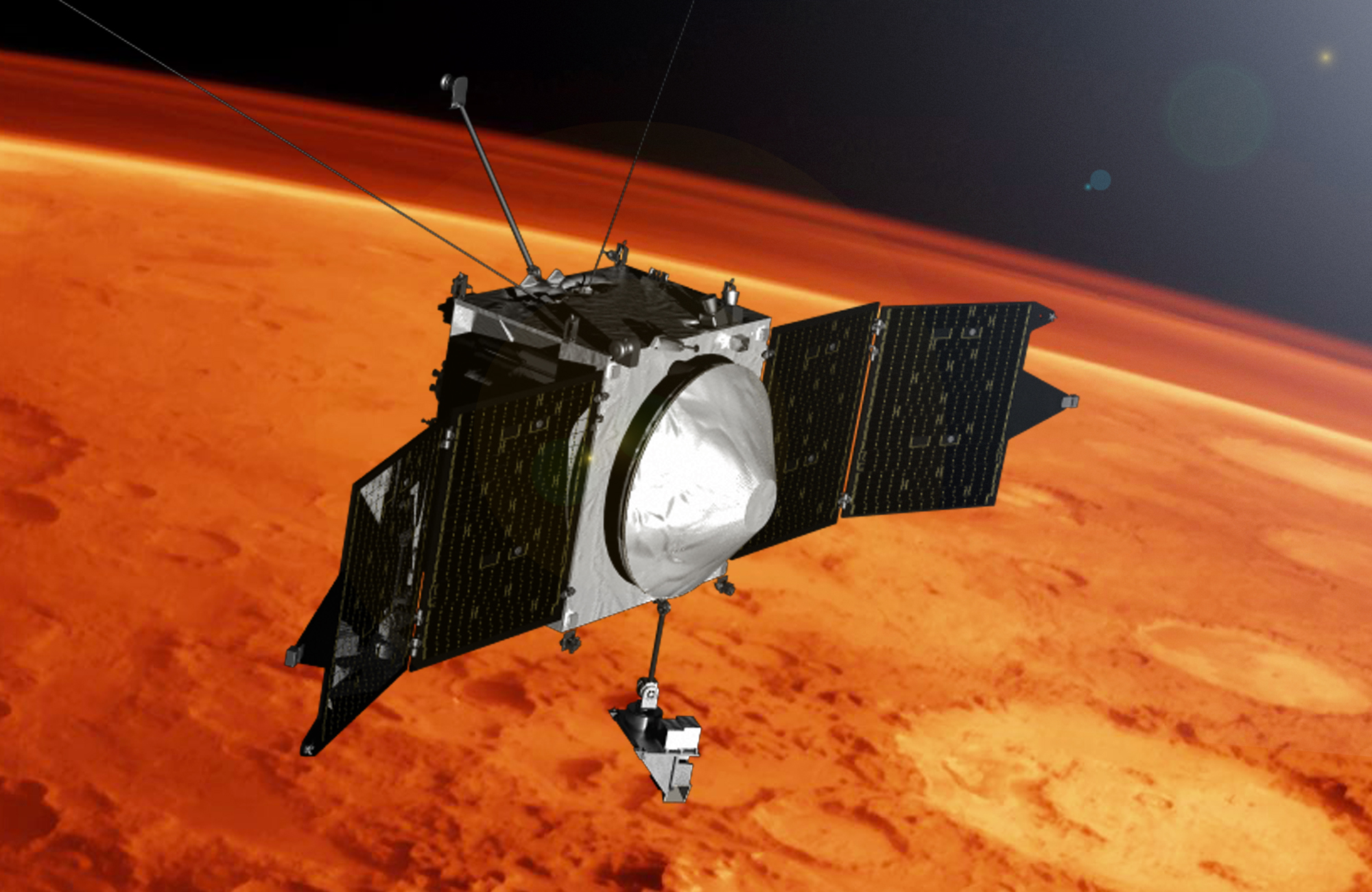This content has been archived. It may no longer be relevant

The Mars Atmosphere and Volatile Evolution mission (MAVEN) launched on November 18, 2013, and entered orbit around Mars on September 21, 2014. The mission’s goal is to explore the planet’s upper atmosphere, ionosphere, and interactions with the Sun and solar wind. Scientists will use MAVEN data to explore the loss of volatile compounds—such as CO2, N2, and H2O—from the Martian atmosphere to space. Understanding atmospheric loss will give scientists insight into the history of Mars’ atmosphere and climate, liquid water, and planetary habitability.

Instruments
MAVEN’s three instrument packages provide comprehensive measurements essential to understanding the evolution of the Martian atmosphere. MAVEN will determine the amount and types of gas particles escaping Mars’ atmosphere today, the processes that govern the escape, and how these escape processes have contributed to Mars’ climate evolution throughout its history.
The three instrument suites include:
The Particles and Fields Package, built by the University of California, Berkeley/Space Sciences Laboratory (SSL) with support from the University of Colorado Boulder/Laboratory for Atmospheric and Space Physics (LASP) and Goddard Space Flight Center (GSFC), contains six instruments that will characterize the solar wind and the ionosphere of the planet:
- Solar Wind Electron Analyzer (SWEA)
- Solar Wind Ion Analyzer (SWIA)
- Suprathermal and Thermal Ion Composition (STATIC)
- Solar Energetic Particle (SEP)
- Langmuir Probe and Waves (LPW)
- Extreme Ultraviolet Monitor (EUV)
- Magnetometer (MAG)
The Remote Sensing Package, built by LASP, will determine global characteristics of the upper atmosphere and ionosphere via remote sensing.
- Imaging Ultraviolet Spectrograph (IUVS)
The Neutral Gas and Ion Mass Spectrometer (NGIMS), provided by GFSC, will measure the composition and isotopes of neutral ions.
The University of California Berkeley Space Sciences Lab designed, fabricated and tested the Particle and Fields Package of Instruments, with contributions by the French on the SWEA instrument.

